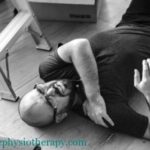What is Tibialis Anterior Tendonitis
The Tibialis Anterior muscle runs down the outside of the shin to attached to the inner side. The Tendon stands out and can be felt easily while lifting the foot up and inward (Dorsiflexion and inversion).
This is an overuse condition common in runners. Tendonitis or inflammation of the protective sheath that surrounds the tendon can arise as a result of overuse particularly through running on hard surfaces or in racket sports where changing direction is frequent.
This Condition is usually associated with an Anterior Shin Splint.
Sometimes the tendon may have degeneration within it as well and not just inflammation. Degeneration typically occurs in middle-aged and older individuals. Symptoms are aggravated by standing and walking.
Symptoms of Tibialis Anterior Tendonitis
Symptoms include pain and tenderness, which will be felt upon active dorsiflexion or when the tendon is palpated.
Diagnosis
This condition can be easily diagnosed through careful examination. Resisted dorsiflexion and inversion movements will reproduce the symptoms. Imaging is rarely done for this condition through an MRI will reveal swelling and inflammation of the lining of the tendon sheath. There will often be fluid around the tendon, and there may be signs of degenerative change within the tendon also.
Treatment of Tibialis Anterior Tendonitis
Treatment for this condition is usually non-operative and is successful in settling the symptoms. As with most cases of soft tissue injuries the initial treatment is – Rest, Ice, and Protection.
- Rest: In the early phase the best is to avoid all activities that induce pain.
- Ice is a simple and effective modality to reduce pain and swelling. Apply ice for 10-15 minutes every 2 to 4 hours during the initial phase.
- Protection: the physiotherapist may normally apply supportive taping or crepe bandage to help relieve pain and unload the tibialis anterior tendon. Taping is normally immediately effective in providing pain relief.
- The physiotherapist utilizes a range of helpful techniques including pain-relieving modalities, joint mobilizations, and strapping to assist during the painful phase.
- Anti-inflammatory medication and creams may help reduce pain and swelling.
Caution:
Corticosteroid injection in this region helps settle the symptoms but increases the risk of rupture of the tendon.
The rehabilitation of athletes should be carefully monitored to avoid excessive stress on the tendon. The training program should increase adequately over time with sufficient recovery time to avoid fatigue. The athletes must be well trained with plyometrics, agility drills, endurance, speed, and proprioception programs to avoid reoccurrence.
Operative Treatment
In resistant patients where the symptoms don’t resolve through non-operative management, surgery can opt. The inflamed tissues around the tendon are debrided surgically, as well as, possible lengthening of the calf muscle is done.





